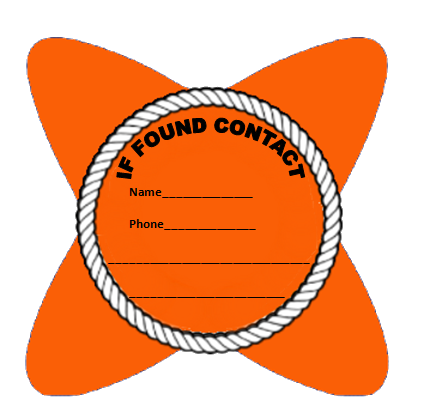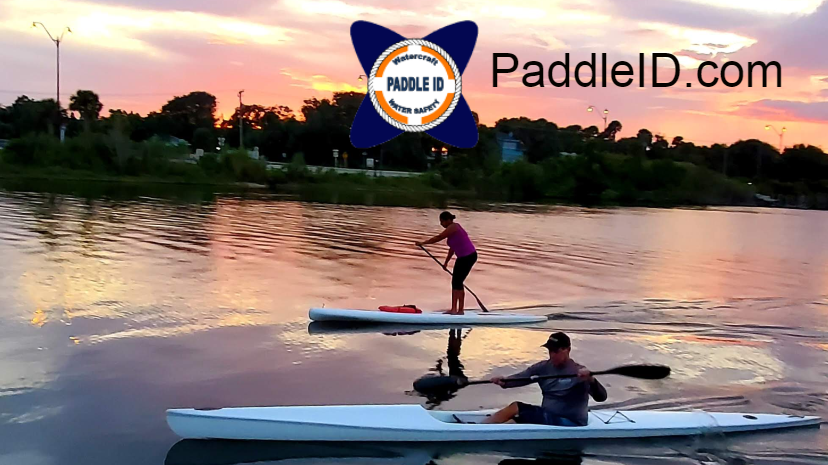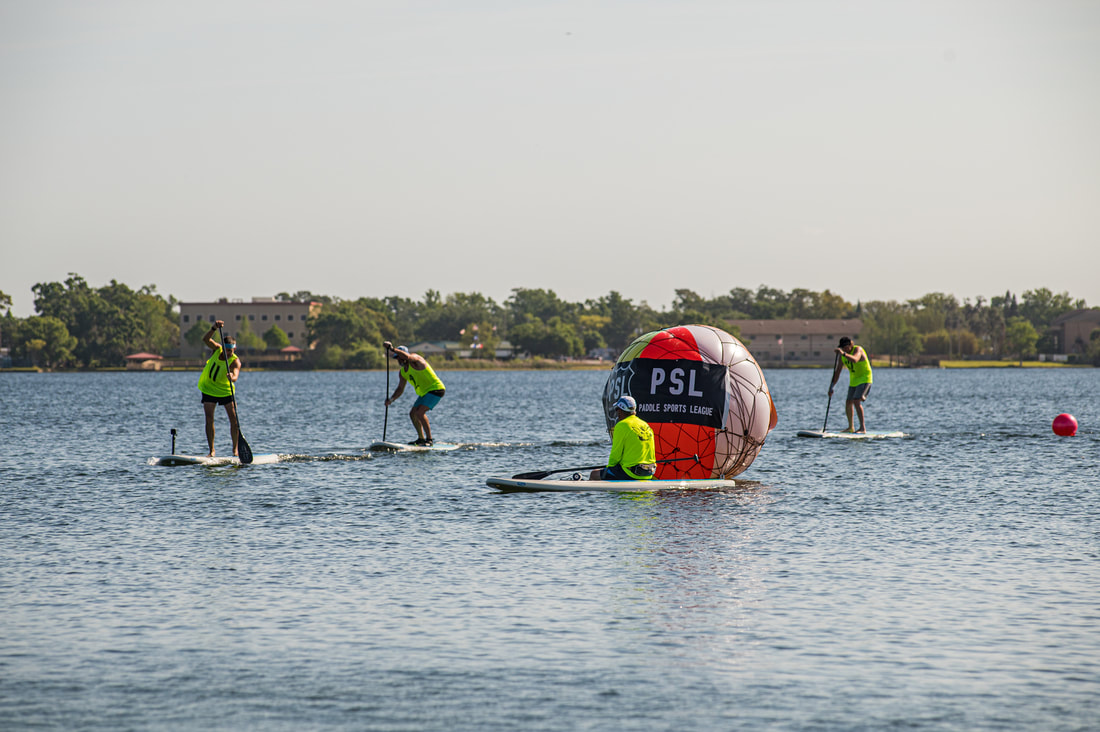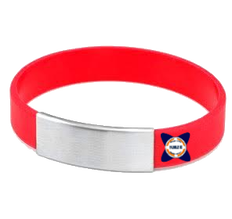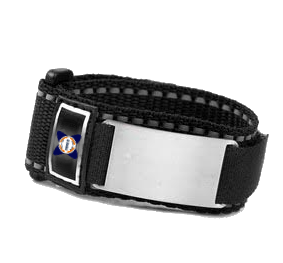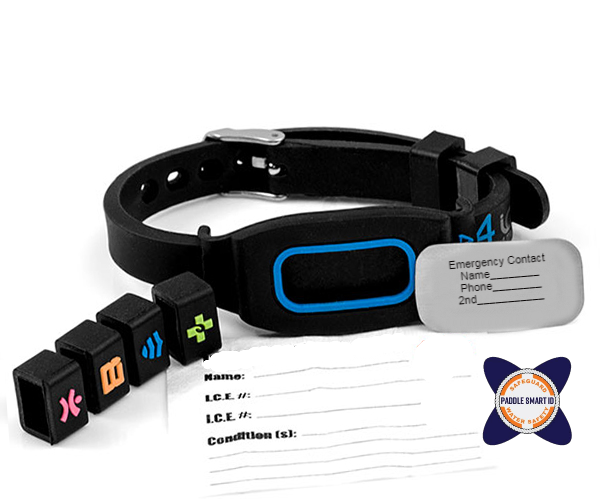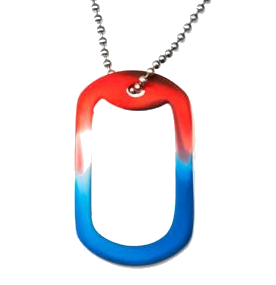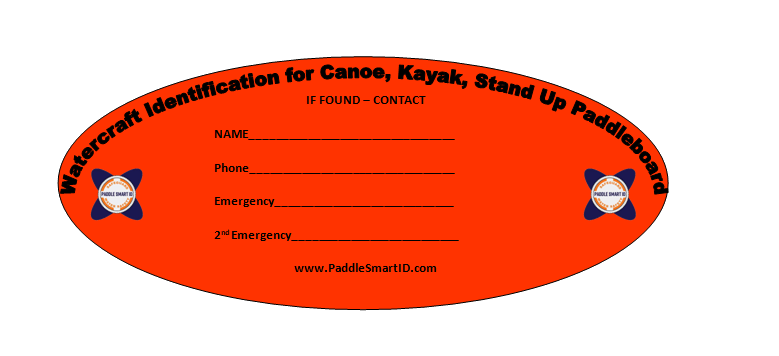Reasons for You to wear
Paddle Smart ID
|
All Paddle SportsSAR
Search and Rescue cost can be brought down with the use of Paddle ID personal band and kayak/SUP tag |
Teach them while they are youngSafety
Guidelines for Properly Filling Out & Mounting Paddle Smart ID Stickers:
|
71 percent of the Earth's surface is water-covered, and the oceans hold about 96.5 percent of all Earth's water. Water also exists in the air as water vapor, in rivers and lakes, in icecaps and glaciers, in the ground as soil moisture and in aquifers, and even in you and your dog.
The Coast Guard urges watercraft owners to properly secure and label their vessels. Coast Guard crews treat every unmanned-adrift vessel as a search and rescue case and immediately launch a search for potential mariners in distress.
“Every unmanned-adrift vessel is treated as a potential distress situation, which takes up valuable time, resources and manpower,” said Coast Guard Lt. Cmdr. Brook Serbu of the 13th District Command Center, Seattle, Washington. “When the craft is properly labeled, the situation can often be quickly resolved with a phone call to the vessel owner, which minimizes personnel fatigue and negative impacts on crew readiness.”
Helicopter and boat crews individually search an average of two hours per response and a similar amount of time is spent by other government agency personnel. Additionally, Coast Guard command center and 911 center personnel spend an additional four hours investigating the incident.
Coast Guard officials encourage all watercraft owners to label their vessels.. At the very least, the label should include the name of the vessel’s owner, a number to reach them. and a secondary point of contact. In the event that the vessel is adrift, crews can use that information to contact the owner and avoid launching an unnecessary search. If the owner of a vessel is unable to be located after a reasonable amount of time, Coast Guard crews are forced to destroy the vessel or turn it over to the state for disposal.
Mariners who encounter unmanned-adrift vessels or other hazards to navigation are encouraged to contact their local Coast Guard District Command Center or via VHF-FM Channel 16.
The Coast Guard urges watercraft owners to properly secure and label their vessels. Coast Guard crews treat every unmanned-adrift vessel as a search and rescue case and immediately launch a search for potential mariners in distress.
“Every unmanned-adrift vessel is treated as a potential distress situation, which takes up valuable time, resources and manpower,” said Coast Guard Lt. Cmdr. Brook Serbu of the 13th District Command Center, Seattle, Washington. “When the craft is properly labeled, the situation can often be quickly resolved with a phone call to the vessel owner, which minimizes personnel fatigue and negative impacts on crew readiness.”
Helicopter and boat crews individually search an average of two hours per response and a similar amount of time is spent by other government agency personnel. Additionally, Coast Guard command center and 911 center personnel spend an additional four hours investigating the incident.
Coast Guard officials encourage all watercraft owners to label their vessels.. At the very least, the label should include the name of the vessel’s owner, a number to reach them. and a secondary point of contact. In the event that the vessel is adrift, crews can use that information to contact the owner and avoid launching an unnecessary search. If the owner of a vessel is unable to be located after a reasonable amount of time, Coast Guard crews are forced to destroy the vessel or turn it over to the state for disposal.
Mariners who encounter unmanned-adrift vessels or other hazards to navigation are encouraged to contact their local Coast Guard District Command Center or via VHF-FM Channel 16.
